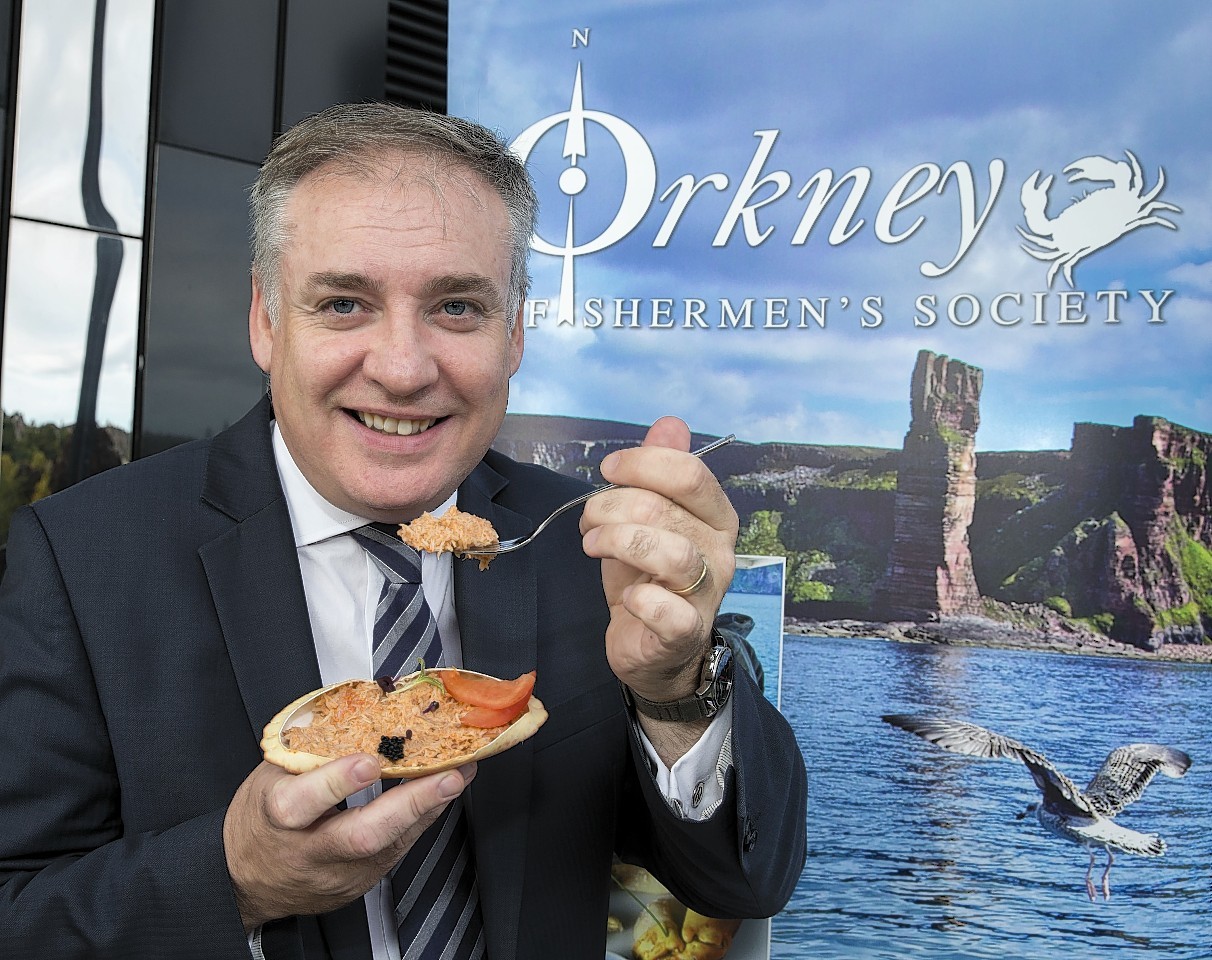Orkney crab could soon have protection from imposters under European Union law.
An application has gone in to have the shellfish covered under a scheme launched in 1994 to protect food names on the basis of geographical or traditional recipes.
Announcing the bid by Orkney Fisherman’s Society (OFS) at an inshore fisheries conference in Inverness yesterday, Fisheries Secretary Richard Lochhead said: “Scotland is world-famous for our wonderful food and drink and Orkney crab is well-known throughout the food industry for its high quality.
“It is extremely important for the public to know where their food comes from. Achieving PFN (protected food name) status will ensure that customers from both Scotland and further afield can be guaranteed that what they are buying is genuine, high quality crab from Orkney.”
OFS general manager Stewart Crichton said: “We’ve worked very hard for a number of years to build the reputation of Orkney crab, starting from our fishermen and the care and pride they take in their job to our processing factories and our customers.
“Protecting the integrity of that brand is the next logical step in the process and one we’re delighted to be embarking on”.
Mr Lochhead also set out the Scottish Government’s new inshore fisheries strategy, which aims to improve the evidence base on which fisheries management decisions are made, streamline fisheries governance and embed inshore fisheries management into wider marine planning.
The minister said: “Inshore fishing is vitally important to the Scottish economy and supports many remote communities.
“I want to see a healthy and productive marine environment, one where thriving fishing businesses work alongside other marine users in resilient coastal communities, and where young people view fishing as an attractive career prospect. I believe this new strategy will help set us on the road to achieving this.”
